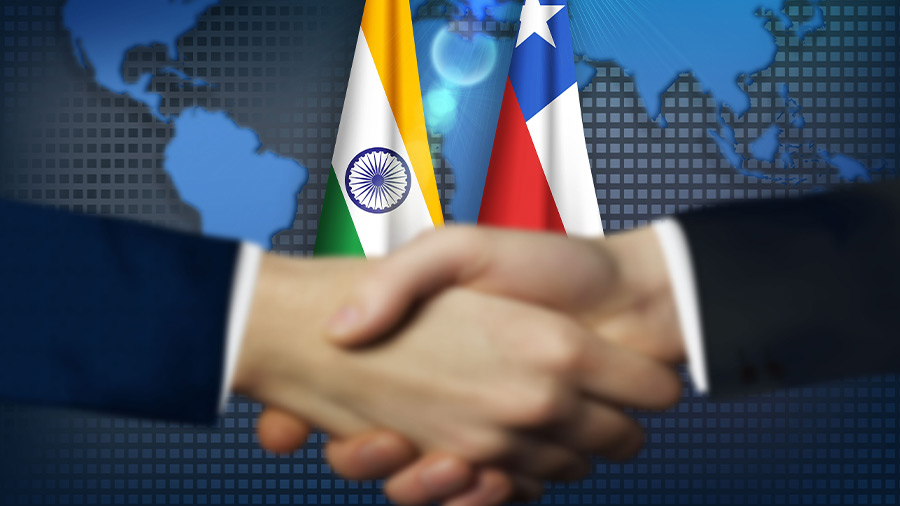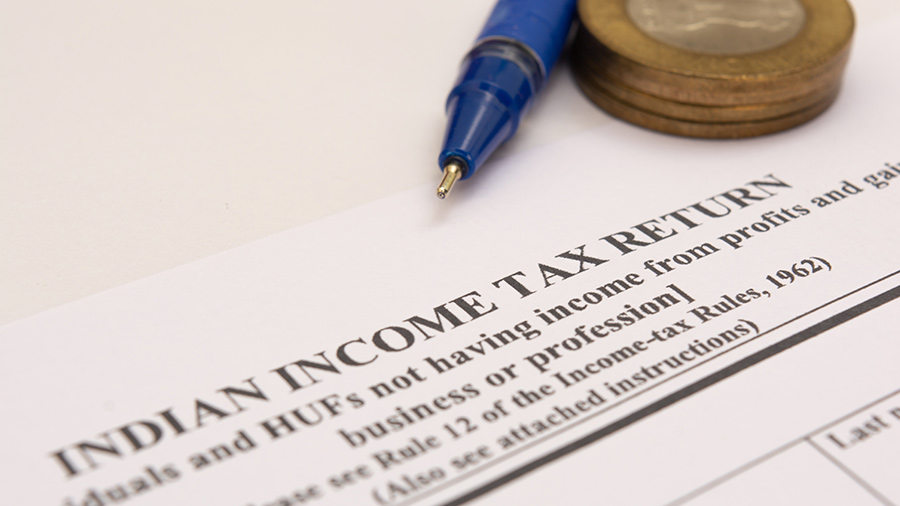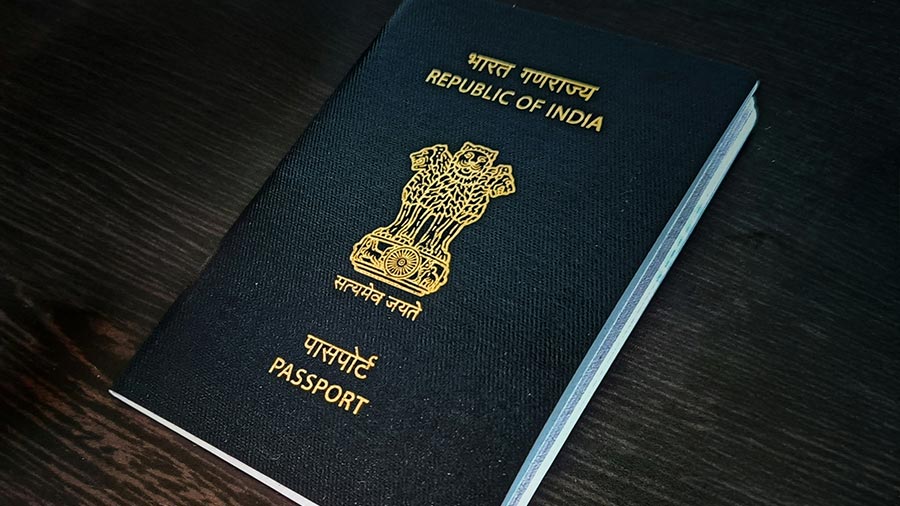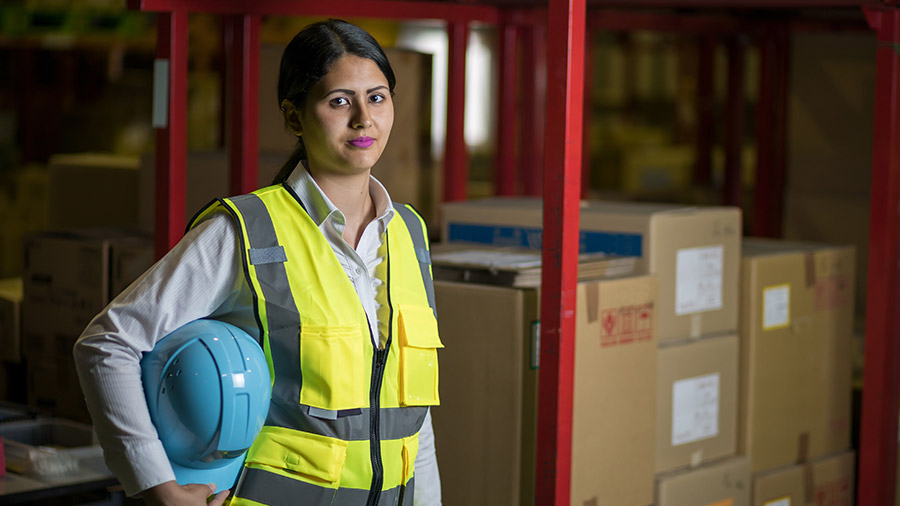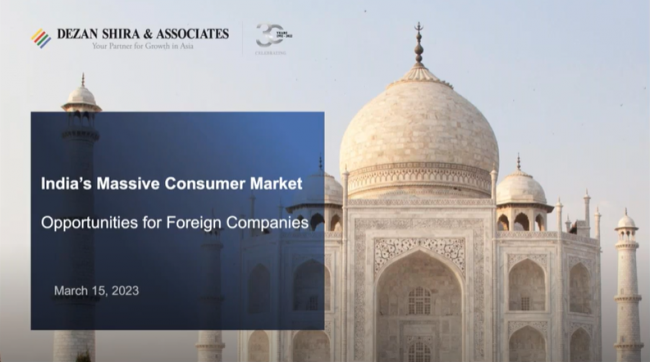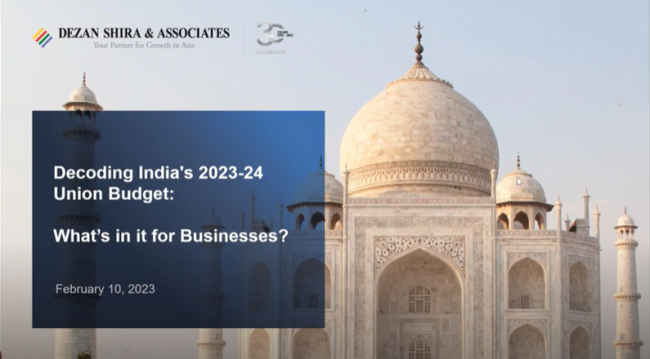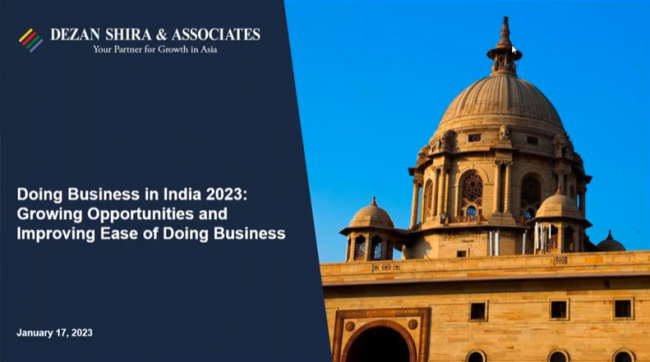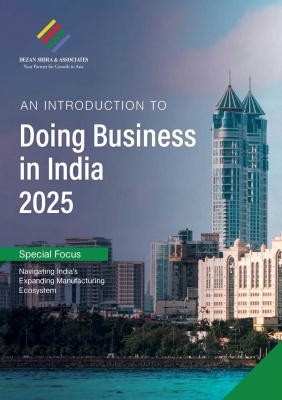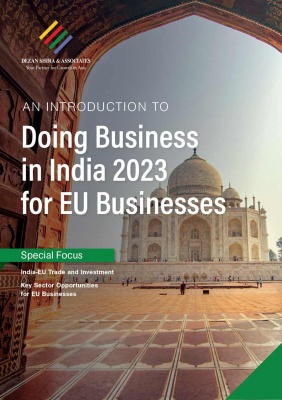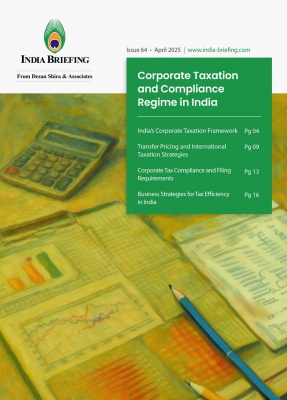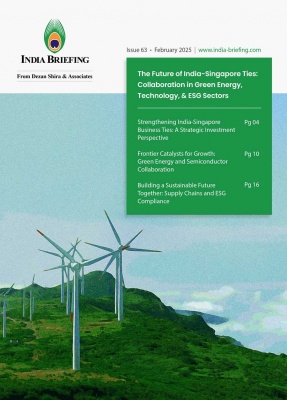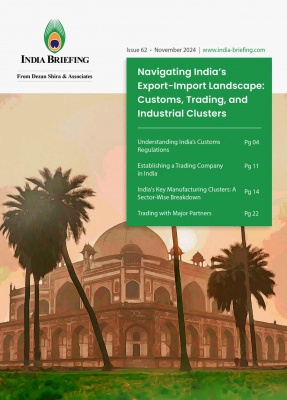How Businesses Are Expected to Gain from the India-UAE CEPA
We briefly examine contents of the speedily finalized India-UAE CEPA and identify key beneficiaries of the trade deal. The CEPA came into effect May 1, 2022, and aims to grow two-way annual trade to US$100 billion – up from US$60 billion – in the next five years. At the outset, elimination of the UAE’s five percent import duty on US$26 billion worth of products will significantly boost local industries in India. Meanwhile, the UAE will enjoy duty free access to 90 percent of India’s exports. The pact has also introduced a liberalized visa regime that includes a three-year visa for intra-corporate transferees and a 90-day visa for business visitors and contractual service suppliers.
On February 18, India and the United Arab Emirates (UAE) finalized their trade deal, officially called the Comprehensive Economic Partnership Agreement (CEPA), over a virtual summit meeting between Prime Minister of India, Narendra Modi and H.E. Sheikh Mohamed bin Zayed Al Nahyan, Crown Prince of Abu Dhabi.
The CEPA is expected to accelerate growth of annual bilateral non-oil trade to US$100 billion in the coming five years, as per a statement from the Indian Prime Minister’s Office. Benefits of the CEPA is expected to impact about US$26 billion worth of Indian products that are currently subject to an import duty of five percent by the UAE.
Bilateral trade and investment – current status
Trade
India is the UAE’s second largest trade partner, accounting for nine percent of the UAE’s total foreign trade and 13 percent of non-oil exports. The UAE is India’s third largest bilateral trade partner. India-UAE bilateral trade is expected to surpass the US$60 billion in the current financial year.
Investment
The UAE is India’s eighth biggest foreign investor – responsible for cumulative foreign direct investment (FDI) worth nearly US$11 billion. The UAE has now committed US$100 billion investments in India in manufacturing, infrastructure, and services.
In June 2020, for example, UAE’s Mubadala invested US$1.2 billion into India’s telecommunications provider Jio Platforms. In 2019, UAE entities committed US$7 billion to create a food corridor between the UAE and India to provide a stable market for Indian farmers in Punjab, Madhya Pradesh, Uttar Pradesh, and Gujarat.
Sector-wise, future UAE investments in India are expected to target healthcare, infrastructure, agriculture, and renewable energy. For example, projects in green hydrogen, climate action, start-ups, skilling, food processing, fintech, and healthtech.
On India’s part, the country’s Reliance conglomerate announced an investment of US$2 billion in Abu Dhabi’s TA’ZIZ Industrial Chemical Zone in April 2022.
Besides mega investment deals, India’s sizeable population in the UAE means that several Indian businesses already operate out of the Emirates. For example, nearly 60 percent of the businesses in Sharjah Airport International Free (SAIF) Zone are Indian. All businesses in SAIF Zone benefit from zero tax, 100 percent ownership, 100 percent expatriate recruitment, preferential customs duty rates, and 100 percent import-and-export tax exemption. For women entrepreneurs, SAIF Zone provides customized incentives for setting up operations. SAIF Zone was established in 1995 and according to its website, is the first ISO 9001 certified airport free zone in the world.
Tapping into the fresh opportunities created due to the India-UAE CEPA, the Associated Chambers of Commerce and Industry of India (ASSOCHAM) and the Coimbatore District Small Industries Association (Codissia) have sought to explore business opportunities for Indian firms in the region, and held an interactive session in association with SAIF Zone. The Hindu reports that Coimbatore exports textiles, air compressors, food products, and jewelry to the Sharjah emirate.
Fresh impetus to CEPA investment goals with I2U2 framework
In July this year, a new quadrilateral forum was established – I2U2, whose members are India, Israel, UAE, and the US. The forum identifies six areas of cooperation, namely water, food security, health, energy, transportation, and space.
Speaking with Gulf News on the occasion of India’s Independence Day, Dr Aman Puri, Consul General of India in Dubai noted that the Emirates will be looking to “invest US$2 billion (Dh 7.3 billion) to develop a series of integrated food parks incorporating state-of-the-art climate-smart technologies to reduce food waste, conserve fresh water and employ renewable energy sources across India.” These investment plans are aligned with the UAE-India CEPA. Meanwhile, US and Israeli private sector expertise will be sought to ensure sustainability and innovation for I2U2 project investments. The food parks will benefit farmers, food processing businesses, and retailers.
Timeline of India-UAE CEPA
The UAE-India CEPA came into force in less than 90 days, by May 1, 2022. Following the conclusion of talks in February, the UAE completed its constitutional and legal process to implement provisions of the pact over the course of 60 days.
Overall, the agreement was concluded after just 88 days, a record time for trade negotiations, especially in the case of India.
MoUs under the UAE-India trade pact
Various memoranda of understanding (MoUs) have been signed between UAE and India under the CEPA framework. These include:
- MoU between India’s Agricultural and Processed Food Products Export Development Authority (APEDA) and the UAE’s DP World and Al Dahra on a “Food Security Corridor Initiative”.
- MoU between India’s GIFT City (IFSCA) and Abu Dhabi Global Market (ADGM) on cooperation in financial projects and services.
- MoU between India and the UAE on Cooperation in the field of Industries and Advanced Technologies.
- MoUs have also been signed on climate action and in education. In 2023, India will host the G-20 summit, and the UAE will host COP-28.
India-UAE CEPA: What’s in it for trade and business?
Tariff cuts
Benefits for UAE and Indian exporters
The India-UAE CEPA eliminates 80 percent tariffs on Indian and Emirati goods and all tariffs will be eliminated within 10 years. The pact gives the UAE zero duty access to 90 percent of India’s exports to the country. UAE commodities like aluminum, copper, and petrochemicals will benefit from the removal of tariffs, according to the UAE Minister of State for Foreign Trade Thani Al Zeyoudi.
For example, UAE cable maker Ducab is seeking to supply India with cable and other metal products targeting the transport sector and mega infrastructure projects.
India has also agreed to concessional import duties on gold imports of up to 200 tonnes per year; India imported 70 tonnes of gold from the UAE in FY 2020-21. This means the UAE will have a tariff rate quota (TRQ) of 200 tonnes where the tariff / import duty will be one percent less than whatever the tariff rate is charged for the rest of the world – in perpetuity. This will be implement over five years.
India-UAE CEPA lists 17 regulatory agencies, such as the Export Inspection Council, Spices Board, Coir Board, and Tobacco Board, which makes it easier to secure clearances for trade.
For Indian exporters, the benefits are clearly tangible and the CEPA will benefit India’s labor-intensive industries, such as textiles, leather, footwear, sports goods, plastics, furniture, agricultural and wood products, engineering goods, pharmaceuticals and medical devices, and automobiles. The services sector segments to benefit from the pact include computer-related services, audio-visual, education, health, tourism, travel, nursing, engineering, and accountancy.
The India-UAE CEPA cuts five percent import duty on major export segments like Indian readymade garments. India’s apparel exports to the UAE currently amount to US$1.51 billion, about 43 percent of the Emirate’s total US$3.51 billion worth imports.
Indian jewelry exporters have also gotten duty-free access to the UAE, which previously imposed a five percent customs duty on such products. Indian designed jewelry already enjoys good market reputation, and the CEPA tariff elimination will expand its export reach. India’s gems and jewelry sector wants to increase its exports to US$10 billion by 2023.
For the pharmaceutical industry – the India-UAE CEPA provides for automatic registration and marketing authorization of Indian generic medicines in 90 days – once they are approved in any of the developed countries, such as USA, EU, UK, and Japan.
Also, the India-UAE CEPA lists 17 regulatory agencies, such as the Export Inspection Council, Spices Board, Coir Board, and Tobacco Board, which makes it easier to secure clearances for trade.
Cumulatively, over the next five years – the tariff liberalization and expanded market access could result in bilateral trade reaching US$100 billion and creation of one million jobs.
Trade impact after the UAE-India CEPA: A look at May-June 2022 data
India’s trade deficit widened due to a jump in oil and gold imports in the first two months since the CEPA with the UAE came into force – that is, the May-June period. India’s trade deficit during this period was worth US$3.92 billion, a leap from US$980 million the previous year.
India anticipates goods export growth to the UAE to reach the realm of US$35-40 billion in FY23.
However, Indian exports to the UAE also reportedly rose – by 17.5 percent to reach US$5.4 billion. India’s exports to the Gulf state are mostly value-added and finished goods – textiles, gems and jewelry, machinery, footwear, automobiles, etc.; it mostly imports raw materials and gets energy supplies from the UAE.
As per media reports, in the first two months since the pact came into effect, May-June 2022, India’s gold exports to UAE jumped 42 percent and plain gold jewelry exports surged 60 percent. Indian traders may look at the competitive logistics and warehousing costs in the UAE and use the country as a base to sell to third-country markets in the Middle East, North Africa, and Central Asia.
In May 2022, as per Livemint, respective Indian export segments noticed the following jumps in growth:
- footwear exports jumped 73 percent
- gems and jewelry exports jumped 33 percent
- exports of tea, coffee, and spices grew 50 percent
- exports of ready-made garment rose 42 percent
- automobile exports jumped by 192 percent
- pharmaceutical exports grew by 52 percent
- vegetable exports surged by 147 percent
Based on this trajectory, Indian exporters aim to sell US$35-40 billion worth of goods to the Emirati market; in FY2021-22, India’s goods exports amounted to US$28 million.
Liberalized visa regime for Indians
Under the India-UAE CEPA, the UAE has agreed to a three-year visa for intra-corporate transferees and a 90-day visa for business visitors and contractual service suppliers from India. The 90-day visa for contractual service suppliers can be extendable.
Strict rules of origin
The India-UAE CEPA has strict rules of origin in the pact to prevent products manufactured in third countries to take advantage of the CEPA route via UAE.
Rules of origin in the pact mandate 40 percent value addition / substantial processing of up to 40 percent on export items besides a certificate of origin issued by the UAE Ministry of Economy.
The CEPA also includes a permanent safeguard mechanism, which can be resorted to in case of a sudden surge in UAE imports.
Items on the CEPA negative list to protect PLI schemes, sensitive sectors
The CEPA contains a special exclusion list to protect domestic producers.
India’s commerce secretary BVR Subrahmanyam clarified that manufacturing sectors wherein the government has rolled out production-linked incentive (PLI) schemes are put on the negative list in the trade pact. To protect sensitive sectors, India has kept certain segments out of the ambit of the CEPA. These include dairy, fruits, vegetables, cereals, tea, coffee, sugar, food preparation, tobacco, petroleum waxes, coke, dyes, soaps, natural rubber, tires, footwear, processed marbles, toys, plastics, scrap of aluminum and copper, medical devices, TV pictures, auto and auto components and sectors under the PLI scheme.
Prospects for entrepôt trade
Indian exporters are also hopeful of greater access to the UAE’s neighboring Gulf markets like Saudi Arabia, Bahrain, Kuwait, and Oman, other Middle East and North Africa countries, European markets, and Commonwealth of Independent States (CIS) markets as Dubai is a renowned trade entrepôt hub.
UAE economic growth prospects to attract businesses
By 2030, the CEPA with India could add US$9 billion (1.7 percent) to the UAE’s GDP. Exports are expected to increase to US$7.6 billion (by 1.5 percent) and imports to US$14.8 billion (3.8 percent).
Tapping the Emirati market offers huge prospects to Indian traders and manufacturers. This is more so as the country acts as a regional financial and economic hub due to its relatively liberal social environment. A spate of recent regulatory reforms has sought to attract foreign investors.
The UAE offers investors more than 40 multidisciplinary free zones, in which expatriates and foreign investors can have full ownership of companies and enjoy 100 percent repatriation of capital and profits, 100 percent exemption from corporate and income taxes, and 100 percent exemption from customs duty. These zones are characterized by efficient infrastructure and services to facilitate smooth workflows.
Meanwhile, under the pact, the UAE is committed to issue 140,000 employment visas to highly skilled Indian professionals by 2030. Over three million Indians currently work in the UAE and send home annual remittances worth billions of dollars.
Chapter on digital trade
The CEPA includes a chapter on digital trade, the first time for India when signing a trade agreement. It covers scope for harmonizing digital trade and e-commerce between India and the UAE. Digital trade will cover areas like paperless trading, personal data protection, and cross-border flow of information. Dispute settlement provisions will not apply to this chapter.
Meanwhile, India is currently negotiating on the subject with EU, the UK, and Canada.
Setting up an IIT in UAE
Under the trade pact, it was agreed that the UAE will be home to the first ever Indian Institute of Technology (IIT) campus outside India. A joint UAE-India vision statement said: “Confirming the historical relations existing between the two countries and realizing the need to establish world-class institutions that encourage and support innovation and technological progress, the leaders agreed to establish an IIT in the UAE.”
What Indian stakeholders have said
India’s Union Commerce and Industry Minister Piyush Goyal stated the CEPA’s balanced, fair, and comprehensive scope allowed for an equitable partnership agreement, offering enhanced market access for India in both goods and services. Goyal said: “It will create jobs for our youth, open new markets for our startups, make our businesses more competitive [and] boost our economy.” Goyal also highlighted the agreement’s strategic advantages: “Since UAE functions as a trading hub, the Agreement will help provide us market entry points to Africa, Middle East and Europe”.
Meanwhile, India is also working to reach similar economic partnership agreements with Gulf Cooperation Council (GCC) countries in 2022 itself – with the GCC Secretary-General also sharing this desire to fast-track negotiations. The GCC is a union of six countries in the Gulf region, namely, Saudi Arabia, UAE, Qatar, Kuwait, Oman, and Bahrain with a combined nominal GDP of US$1.6 trillion.
The Federation of Indian Export Organisations President A Sakthivel expressed enthusiasm for Indian export prospects to the GCC region as the six countries apply “the same technical standards as applicable to the UAE”. He further said that the India-UAE CEPA could thus be “used as a template for similar agreements with GCC countries”.
The Council for Leather Exports Chairman Sanjay Leekha pointed out that the UAE could give Indian exporters access to certain EU countries and Africa.
Plastics Export Promotion Council of India (PLEXCONCIL) Chairman Arvind Goenka remarked on the multifold growth prospects for trade in plastics and potential to create about 200,000 jobs. India imports US$800 million in plastics from the UAE; India’s total imports of plastic raw materials amount to US$14 billion. Overall, Goenka is expectant that MSMEs will emerge as big winners from the trade deal since the availability of cheaper raw materials and preferential import duty by India will enable them to better compete against cheap imports of finished plastic products. India’s plastic exports could thus rise by at least 300 percent by 2023-24, he said.
This article was originally published February 21, 2022. It was last updated August 30, 2022.
Dezan Shira & Associates maintain an office in Dubai and can assist with corporate registrations, tax advisory, employee visa applications, bank account opening and other ongoing business and trade compliance matters. Please contact Maria Kotova at dubai@dezshira.com for assistance.
About Us
India Briefing is produced by Dezan Shira & Associates. The firm assists foreign investors throughout Asia from offices across the world, including in Delhi and Mumbai. Readers may write to india@dezshira.com for more support on doing business in in India.
We also maintain offices or have alliance partners assisting foreign investors in Indonesia, Singapore, Vietnam, Philippines, Malaysia, Thailand, Italy, Germany, and the United States, in addition to practices in Bangladesh and Russia.
- Previous Article India PLI Scheme for Design-Led Manufacturing of 5G Products
- Next Article India-Egypt Bilateral Trade and Investment Profile
